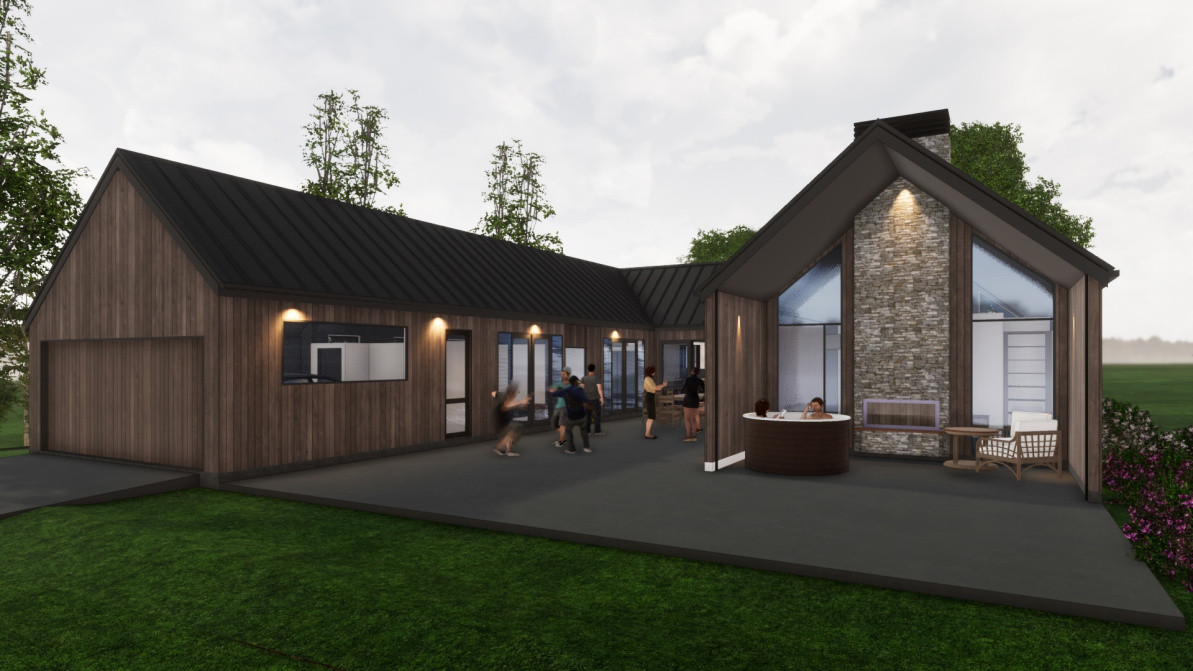Project
Wedding Venue Accommodation / Air B&B / Holiday Home, Old Railway Road
Project description
Additional dwelling to a wedding venue for guests to stay at.
PROJECT SNAPSHOT
Year Completed: 2021
Professional Service/s: Resource Consent, Building Consent
Overview
A client approached The DESIGNFIRE wanting to build an additional dwelling on their property. They are wanting to create a space for guests to stay the night before/of their wedding, and also using the space as a place where family can stay for extended periods of times. The difficulty is that there is no clear cut consent process or requirements for a property like this.
Execution
This property is a large vineyard estate that is used for corporate events and more popularly, weddings. It is located in Kumeu, 25 minutes from Auckland Central.
The client came to THE DESIGNFIRE intending to build another house on the property. After designs were drawn up, they then wanted to know if anything needed to be changed to the design if they wanted to use it as a short term holiday house.
When we are talking about a short term holiday house, we are talking about a house where it would be used as “visitor accommodation” in conjunction with the function centre/wedding venue. Another way of looking at the “visitor accommodation” is viewing it in a similar place to Air BnB or a Holiday house. Neither example is explicitly defined under the Building Act, as they both don’t require a manager, those staying will be known to the client, and they will be staying short term.
THE DESIGNFIRE approach of functional – attractive – safe, resulted in enquiring further with relevant parties to see where this project would sit in the consents process.
For the dwelling to be used as intended visitor accommodation in support of the function centre/wedding venue, on top of the information required for the Land Use Consent, you will also need to provide the following:
A description of the extent and scale of the accommodation activity,
A revised assessment of effects,
An assessment of the relevant objectives,
Policies of the Auckland unitary plan within H19 Rural Zones.
Where to next?
There are two options to go forward from the original dwelling consent application.
Option #1
The client can revise the current application to change from ‘dwelling’ to ‘visitor accommodation’. They will also need to provide the above additional information – this will require a further assessment from Council and statutory timeframes would need to be doubled to enable this change. From there, new conditions would need to be considered and recommended.
Option #2
Keep the application as is and accept the draft conditions. The report can go into the review process and the consent can be issued for the original dwelling consent application. A new resource consent application would need to be lodged to convert the dwelling into a Visitor Accommodation.
No matter what, with both options, Council review is required. The building consent would have been lodged solely for a dwelling, which means if Option #2 is to be followed through, then once the resource consent is issued there would not impede for the building consent to be implemented.
If Option #1 is chosen, then that means there will be a longer delay as time will be needed to revise the application and for Council to reassess the somewhat new application.
This project’s challenges are going to become more and more common as people begin building homes that will also be used as short term accommodation.
The DESIGNFIRE is committed to understanding the building act so that you don’t need to spend hours combing through various sections and trying to comprehend what it means for your project.
Last updated on 03-05-2023



